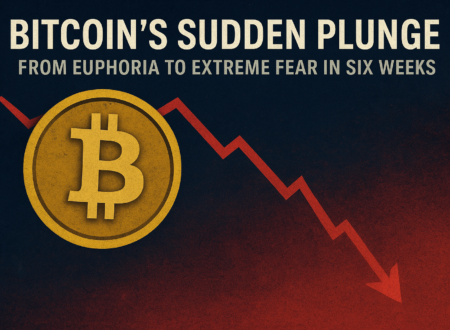Gold Unlocked: Expert Insights on Bullion’s Unstoppable Rally above $3357
On March 14 spot gold finally climbed above $3,000 an ounce, marking a watershed moment for the precious metal. Within weeks prices pushed even higher, topping $3,300 in mid‑April and setting a fresh all‑time high. This string of record peaks has made 2025 one of gold’s strongest years since the 1980s.
Rising about twenty‑six percent so far, gold has outpaced most other assets and drawn comparisons to its explosive gains during past crises. Each new high has reinforced the narrative that bullion remains the go‑to refuge when economic doubts and market volatility rise.
Drivers of Gold’s Historic Rally
Central Bank Buying and Reserve Diversification
Throughout the first quarter, major central banks have tapped bullion to diversify reserves away from the U.S. dollar and euro. Nations like China, India and Turkey added over 200 tonnes combined, marking the strongest quarterly buying in years. Accumulation at this scale has tightened physical supplies and lent powerful support to prices—even as mining output remains relatively flat.
Shifting U.S. Monetary Expectations
Heightened confidence that the Federal Reserve will begin cutting interest rates later in 2025 has lowered the opportunity cost of holding non‑yielding gold. Traders pricing in multiple rate reductions have driven real yields on Treasuries into negative territory, a classic bullish setup for bullion. A softer dollar has amplified the effect, making ounces cheaper for overseas buyers.
Safe‑Haven Demand and Geopolitical Tensions
Persistent flashpoints—in the Middle East, Eastern Europe and the South China Sea—have spurred flight‑to‑safety flows. Whenever equities wobble on news of fresh skirmishes or diplomatic breakdowns, gold tends to spike. In an era of heightened uncertainty over supply‑chain security, cyber risk and political fractures, bullion’s insurance appeal has never been stronger.
Trade War as a Catalyst
Trade tensions between major economies have periodically ignited fresh spurts in gold buying. Tariffs and counter‑tariffs elevate the risk of slower growth and higher inflation, scenarios in which gold traditionally thrives.
U.S.–China Frictions
Resurgent talks of fresh technology bans and tariff hikes between Washington and Beijing have rattled equities and the yuan alike. A weaker renminbi often pushes China’s government and private buyers toward bullion as a hedge.
Broad Deglobalization Pressures
Rising “friend‑shoring” initiatives and the threat of tariffs on a wider array of goods are increasing the perceived risk premium on global trade. As companies brace for supply‑chain fragmentation, gold’s role as a portable store of value offers unique protection.
Currency‑Competition Dynamics
When major central banks engage in competitive easing—each seeking to weaken its currency to spur exports—gold benefits as investors seek an asset unlinked to any one nation’s monetary policy.
Impacts on Markets and Industries
Exchange‑Traded Funds and Investor Flows
Gold‑backed ETFs have recorded their heftiest inflows since early 2022, with tens of billions of dollars pouring in. Asset managers are raising their target allocations to bullion, and fractional‑share platforms have made it easier than ever for retail investors to participate.
Mining Equities and Project Economics
Gold miners have enjoyed a surge in share prices and rising cash flows. Higher spot prices justify reopening mothballed mines and accelerating investment in exploration. Junior miners with large undeveloped deposits have seen their valuations rerated.
Jewelry and Luxury Goods
In traditional markets such as India and the Middle East, higher retail prices have temporarily subdued volumes but driven up average selling prices, keeping total revenues robust. In luxury watchmaking and electronics, rising input costs for gold components are being passed through to end consumers.
Industrial and Technological Applications
Beyond ornamentation, gold’s conductivity and corrosion resistance make it vital in connectors, microelectronics and aerospace components. Corporations are weighing longer‑term supply contracts and recycling initiatives to manage costs amid tighter availability.
Future Scenarios for Gold Prices
Base‑Case: Gradual Consolidation ($3,300–$3,500)
If central banks maintain steady buying, rate‑cut expectations remain intact and geopolitical flashpoints flare only intermittently, gold may trade sideways to mildly higher. Rangebound moves between $3,300 and $3,500 could prevail through mid‑2025.
Bullish Upside: Breakout to $4,000+
A shock event—such as a major escalation in geopolitical conflict or evidence of a deep U.S. recession—could unleash a fresh rush into safe havens. Under that stress, bullion might test $4,000 within months, a scenario some macro strategists consider plausible.
Bearish Pullback: Return to $2,800–$3,000
Should U.S. data surprise on the upside, triggering a bond sell‑off and dollar rebound, gold could momentarily give back 10–15 percent. In that case, a floor around $2,800–$3,000 would likely emerge as value investors step back in.
Wild‑Card: Volatility Spike
Algorithmic trading and increasingly leveraged positioning can induce sharp intra‑day swings. Even without clear fundamental drivers, gold might briefly overshoot any trend, underscoring the need for risk‑management tools such as options or stop‑loss orders.





